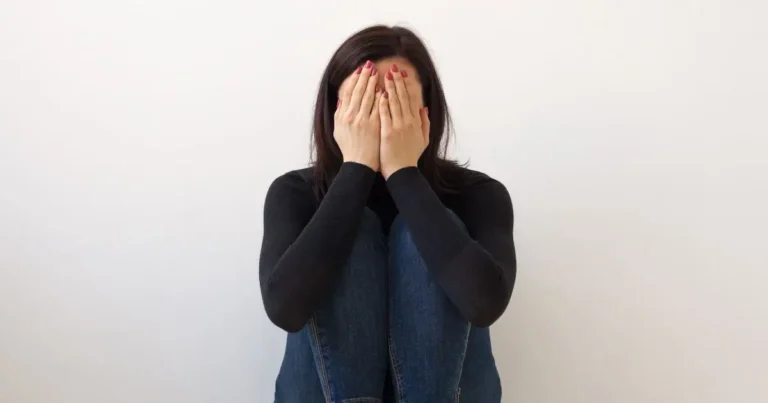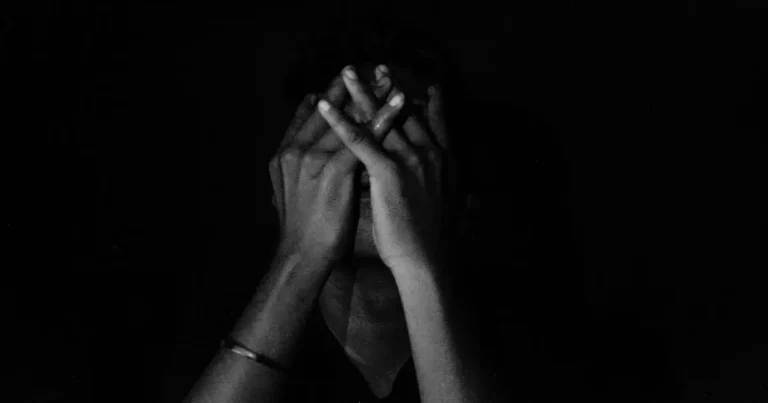Menstruation can bring changes in energy levels, pain sensitivity, and emotional states, all of which can affect BDSM play. While some people prefer to take a break during their period, others want to continue engaging in kink but may need adjustments to feel comfortable and safe. The key to enjoying BDSM during menstruation is adapting play to suit your body’s needs while maintaining clear communication with your partner.
Whether you’re looking for low-impact BDSM activities, ways to manage period-related discomfort, or tips for maintaining intimacy without feeling self-conscious, this guide will help you navigate BDSM during menstruation in a way that honors both your pleasure and well-being. With the right approach, BDSM can still be fulfilling and exciting—no matter what time of the month it is.
Understanding How Menstruation Affects BDSM Play
Your period can influence your physical comfort, pain tolerance, and emotional state, which may impact the way you experience BDSM. By recognizing these changes, you can adjust your play to match your body’s needs rather than pushing through discomfort when experiencing BDSM during menstruation.
Changes in Pain Sensitivity
Hormonal shifts during menstruation can make some people more sensitive to pain, while others experience a higher pain threshold. This means that impact play, sensation play, or even bondage may feel different than usual.
How to Adjust BDSM Play
- If pain tolerance is lower, opt for lighter impact or sensation play.
- If pain tolerance is higher, experiment with more intense stimulation if desired.
- Be aware that areas like the lower abdomen, lower back, and thighs may be more tender.
Shifts in Energy Levels
Many people experience fatigue during menstruation, which can make high-intensity play in BDSM during menstruation feel exhausting rather than enjoyable.
How to Adapt Play to Energy Levels
- Consider softer, slower play, such as sensual domination or service-oriented submission.
- Shorten the length of scenes to prevent exhaustion.
- Use comfort-focused bondage, like weighted blankets or light restraints, rather than restrictive positions.
Emotional and Mental State During Menstruation
Some people experience mood swings, increased emotional sensitivity, or even feelings of vulnerability during their period. These shifts can affect how BDSM dynamics feel, especially those involving power exchange or intense psychological play. It’s important to keep these shifts in mind when experiencing BDSM during menstruation.
How to Navigate Emotional Sensitivity
- Avoid play that might be emotionally overwhelming, such as degradation or intense humiliation.
- Incorporate more reassurance, praise, and positive affirmations into play.
- Check in with yourself and your partner before engaging in heavy emotional or mental play.
Types of BDSM Play That Work Well During Menstruation
Not all BDSM activities require high energy or intense physical endurance. BDSM during menstruation offers a great time to explore different styles of play that prioritize comfort, relaxation, and emotional connection while still embracing kink.
Sensory and Sensual Play
Sensory play is a fantastic way to indulge in pleasure without requiring intense movement or endurance, ideal for BDSM during menstruation. Soft textures, temperature play, and gentle stimulation can enhance sensations while keeping play comfortable.
Sensory Play Ideas
- Feather ticklers, silk restraints, or fur-lined cuffs for light restraint and stimulation.
- Temperature play with warm massage oil or an ice cube for soothing contrast.
- Light touch, gentle scratching, or hair pulling for a relaxed but engaging scene.
Service-Oriented Submission and Caretaking Play
If energy levels are low, shifting the dynamic to service-oriented play can allow the submissive to engage in a fulfilling way without strain when experiencing BDSM during menstruation. Similarly, caretaking play can provide comfort and reassurance.
Low-Energy BDSM Ideas
- Acts of service, such as preparing a warm bath, giving a massage, or pampering the Dominant.
- Soft dominance, like guiding a submissive’s relaxation with affirmations and gentle commands.
- Weighted blankets or comforting bondage, like being held or lightly restrained.
Erotic Hypnosis and Mind Play
BDSM doesn’t have to be physically intense to be deeply satisfying. Erotic hypnosis, guided visualization, and power-based storytelling can create immersive experiences with little physical effort, ideal for BDSM during menstruation.
Ways to Incorporate Hypnosis and Mind Play
- Guided submission or control fantasies, where a Dominant verbally leads a submissive through a scenario.
- ASMR and voice control, using soothing tones or commands to enhance sensation.
- Sensory deprivation, like blindfolds and headphones, to heighten other senses.
Soft Impact and Light Bondage
For those who still enjoy impact or restraint during their period, opting for gentler forms of play can provide stimulation without discomfort.
Adapted Impact and Bondage Play
- Using hands instead of paddles for a softer, more controlled sensation.
- Focusing on upper-body bondage instead of leg or waist restraints to avoid pressure on the abdomen.
- Lighter flogging or tapping techniques rather than heavy impact.
Hygiene and Preparation Tips for Period-Friendly BDSM Scenes
Menstruation doesn’t have to disrupt BDSM play, but taking extra steps for cleanliness and comfort can help both partners feel at ease when exploring BDSM during menstruation. Whether you’re engaging in impact play, bondage, or sexual activities, these tips ensure a smoother and more enjoyable BDSM during menstruation experience.
Preparing for Play During Your Period
A little preparation can go a long way in making BDSM scenes feel comfortable and mess-free when exploring BDSM during menstruation.
Ways to Prepare
- Use dark-colored sheets or towels to prevent stains and make cleanup easier.
- Have baby wipes or a damp cloth nearby for quick cleanup before and after play.
- Communicate beforehand so both partners are comfortable with any potential mess.
- Consider menstrual products like a softcup or menstrual disc, which allow for penetrative play with less mess.
Choosing the Right Menstrual Products for Play
Different period products can impact how you experience BDSM play, especially when engaging in penetration or bondage in BDSM during menstruation.
Period Product Considerations
- Menstrual discs or softcups: Ideal for internal wear during penetration, reducing mess while maintaining comfort.
- Tampons: Work for non-penetrative play but can be uncomfortable if there’s pressure on the cervix.
- Pads or period underwear: Great for comfort-focused scenes without internal products.
- Free bleeding: Some people prefer to embrace the natural flow, using towels or waterproof sheets.
Cleaning Up After BDSM Play on Your Period
Post-scene cleanup is always important, but menstruation may require a few extra steps to maintain hygiene in BDSM during menstruation.
Quick and Effective Cleanup Tips
- Have a warm, damp washcloth or body wipes ready to freshen up afterward.
- Use a waterproof or absorbent blanket for easier cleanup after play.
- Dispose of period products discreetly if playing in a shared space.
- Shower together as part of aftercare, using warm water to relax and reset.
Aftercare Considerations and Emotional Support During Menstruation
Menstruation can bring physical discomfort and emotional fluctuations, making aftercare even more essential. Whether it’s managing cramps, fatigue, or heightened emotions, thoughtful aftercare can help both partners feel nurtured and supported after BDSM during menstruation play.
Physical Comfort After BDSM Scenes
Since the body may be more sensitive during menstruation, prioritizing comfort-based aftercare can help with post-scene recovery after experiencing BDSM during menstruation.
Ways to Support Physical Recovery
- Use heating pads or warm blankets to soothe cramps and muscle tension.
- Offer a warm drink like tea or hot cocoa to promote relaxation.
- Encourage gentle stretching or massage to ease soreness from play.
- Allow extra rest time if fatigue is a factor.
Emotional Reassurance and Support
Menstruation can amplify emotions, making some people feel more vulnerable or sensitive after BDSM play. Recognizing these shifts and providing reassurance can strengthen the connection between partners.
How to Offer Emotional Aftercare
- Check in with your partner about their feelings post-scene.
- Offer extra reassurance or praise to counter any heightened self-consciousness.
- Give space if needed, as some people may want alone time to process.
- Plan a relaxing post-scene ritual, like watching a movie, cuddling, or taking a warm bath together.
Communicating Needs for Aftercare
Because menstruation can change aftercare preferences, it’s important to communicate needs clearly. Some people may want extra closeness, while others might need time alone.
Tips for Effective Aftercare Communication
- Let your partner know what you need upfront, whether it’s a longer cuddle session or quiet rest.
- Be flexible with aftercare routines, adjusting them to accommodate changes in energy and comfort levels.
- Use check-in questions, like:
- “How are you feeling physically and emotionally?”
- “Do you need anything else to feel comfortable?”
- “Would you like some quiet time or closeness?”
By prioritizing both physical and emotional aftercare, BDSM play during menstruation can remain a positive and fulfilling experience for everyone involved.
Conclusion – Embracing BDSM During Menstruation with Confidence
Menstruation doesn’t have to be a barrier to BDSM. By adapting play styles, prioritizing comfort, and maintaining open communication, you can still enjoy fulfilling and exciting experiences during your period. Whether you’re modifying impact play, exploring sensual and service-oriented dynamics, or simply focusing on emotional intimacy, the key is honoring what feels best for your body and mind.
Key Takeaways:
- Listen to your body and adjust play based on energy levels and pain sensitivity.
- Experiment with different types of BDSM play that feel comfortable and enjoyable.
- Prioritize hygiene and preparation to create a relaxed and stress-free experience.
- Customize aftercare to support physical and emotional well-being.
- Communicate with your partner about any adjustments or needs during your period.
BDSM is about exploration, connection, and pleasure—menstruation doesn’t change that. With the right approach, you can continue to engage in kink in ways that feel safe, enjoyable, and empowering, no matter where you are in your cycle.










